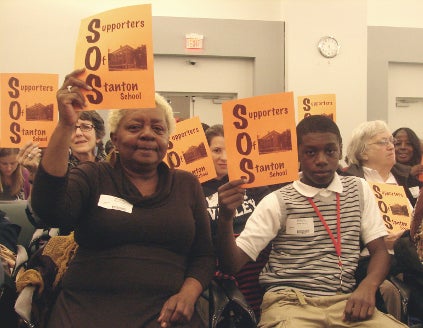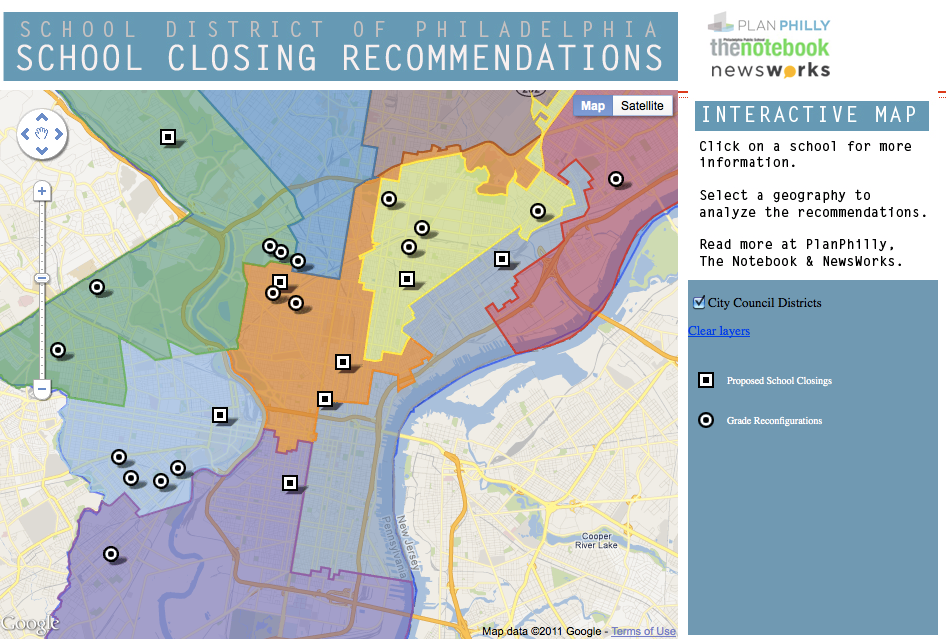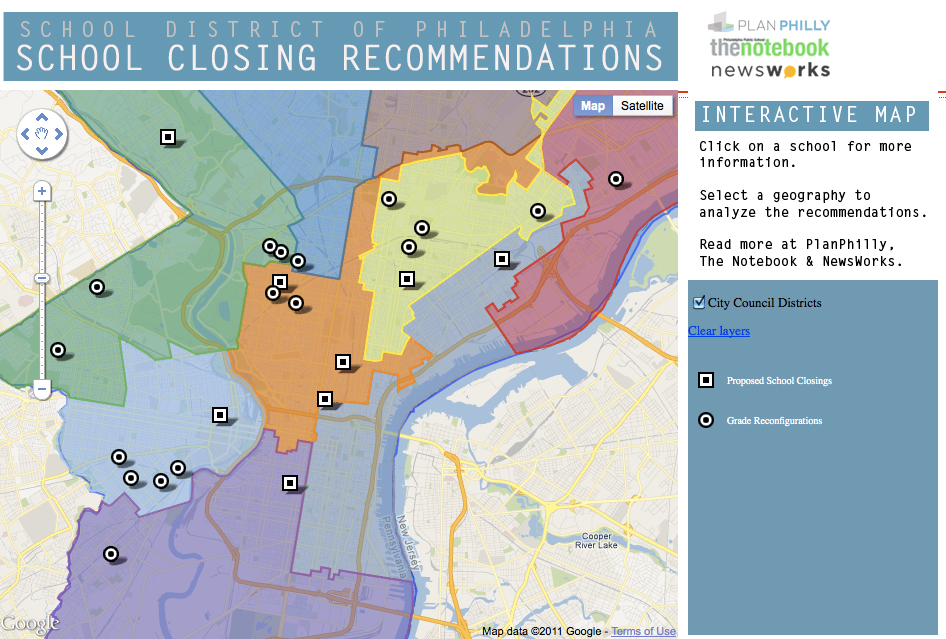Photo: Benjamin Herold
E.M. Stanton eighth grader Nagee Graves (right) and his grandmother Gerri Graves advocated at Wednesday’s School Reform Commission meeting for their school to be kept open.
The
new-look SRC, still short two members, took pains to emphasize that no final decisions have yet been made about specific schools and that they welcomed public input on the plan.
“These are recommendations,” said recent mayoral appointee
Lorene Cary. “This is not a show trial where everything is already done and everybody has to shut up.”
On November 17, the District will host the first of
17 community meetings seeking input on its recommendations.
Under state law, the SRC must also hold a public hearing on the recommendations and then allow for 90 days before it can take a formal vote to close schools. Officials said the earliest a vote could take place without a special meeting being called is March 22, 2012.
Interconnected recommendations
The nine schools listed for potential closure are spread throughout the city in a demographically diverse collection of neighborhoods, leaving no single community, ethnic group, or economic class bearing the brunt of the plan’s pain.
In making their recommendations, District officials said they considered a wide variety of factors ranging from the age of a school’s building to the quality of its educational program.
Creating more traditional middle schools and reducing the number of grade configurations across the District were key factors in the District’s decisions, said Floyd.
“One of the goals of this plan is to really try to get back to something that’s more manageable and predictable” for parents, she said.
All but one of the grade configuration changes involve changing just one grade, in most cases shifting K-6 schools to K-5.
Shaw and Tilden middle schools will be taking on more students, with each starting a grade earlier, while E.W. Rhodes is losing its high school grades and becoming strictly a middle school.
But two existing middle schools are targeted for closing – Pepper in Southwest Philadelphia and Sheridan West in Feltonville.
Many of the proposals are interrelated. In North Central Philadelphia, for example, FitzSimons High would be phased out over a two-year period, leaving E.W. Rhodes as the community’s neighborhood middle school and nearby Strawberry Mansion as its neighborhood high school.
In Roxborough, the educational program at Levering Elementary would be closed down, with parents given four options for where to send their children. The building at Levering would remain open, however, with another school that is currently in a leased facility in Mt. Airy, AMY Northwest, moving in.
“It’s going to be a little bit messy to get there, but we’re trying to have it be more streamlined,” said the Floyd.
Officials provided no firm estimates of the total budgetary impact of their plan, but said the cash-strapped District might save between $500,000 and $1 million per closure, per year – before the expenses of relocating students and staff and maintaining the shuttered facilities are factored in.
Further budget relief could come from the sale of surplus properties.
The District already was trying to sell off eight of its closed buildings. Under the plan announced Wednesday, some additional properties will also be listed, including two recently replaced schools – the West Philadelphia High building at 47th and Walnut Streets, and
Willard Elementary in Kensington.
Acting Superintendent Nunery stressed that the facilities plan will not bring in “huge windfalls of cash,” however.
Current estimates are that the District can net $5 million from property sales this year.







